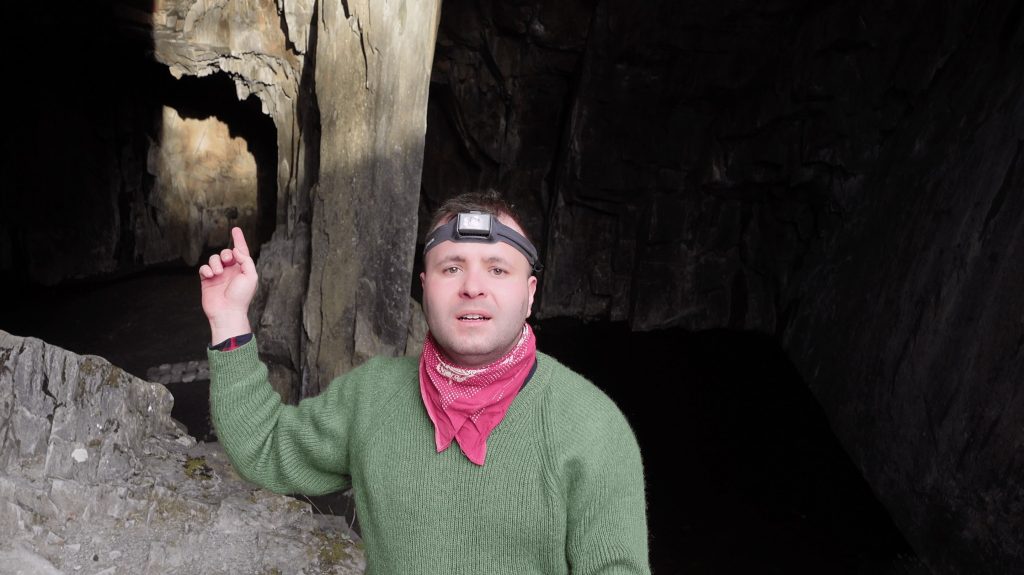
While still in Lake District, near Coniston water, I set off to explore the Cathedral Cave, which was aptly named for its spectacular cavern in the first chamber. This whole landscape had been shaped by industry, with slate quarries and copper mines dotting the Tilberthwaite and surrounding areas. Records of quarrying dated back to the sixteenth century, with the Little Langdale quarries booming during the nineteenth century due to a high demand for slate during the housing boom.
The slate was extracted using explosive-packed holes in the rock face, and then riven and dressed on site. Finished products were transported down the valley by horse and cart, and later by railway across the country. Beatrix Potter even purchased one of these quarries in 1929, and donated it to the National Trust.
Slate, a metamorphic rock formed from layers of ash and dust spewed out by volcanoes millions of years ago, proved to be an excellent material for roofing and building due to its water and wind resistance, as well as its ease of splitting.
